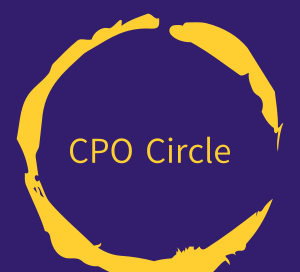CPO Circle: How to Engage with your Board
Developing meaningful relationships that drive better outcomes for the company and your team
A group of us CPOs gather every once in a while to talk shop. Our group includes Chief Product Officers, Chief Customer Experience Officers and SVPs of Product from a broad range of both publicly traded and privately held (Private Equity and Venture Capital backed) companies. We thought it might be useful to share some of our discussions here so that others can have a peek into our musings. We also would love to hear from you! Share your thoughts so we can all learn together.
April CPO Circle:
Productive Relationships with the Board of Directors
Whether in a privately held or publicly traded company, there are similar dynamics between the Board and Executive Leadership. As Product leaders we may have varying relationships with Board members depending on the state of the business. How should we think about the extent to which we should be engaging with the Board? How can we leverage these relationships for career development? Where do we even start?
How does Board make-up differ among public and privately held companies?
First, let’s consider Board Makeup. What kinds of people are typically on Boards? The makeup and type of a board can be vastly different across different types of companies.
Publicly-traded companies
If you work for a large publicly-traded company the board tends to be very formal and the dynamics tend to be more controlled and planned. Members of the board generally are deeply experienced in the industry or have deep expertise in specific skills - such as finance, marketing or human resource management - that the company sees as particularly important to their success. These board meetings tend to be well managed, structured and can often require weeks of preparation. You know that dreaded quarterly “board meeting scramble”. Surprisingly, despite the cross-industry focus on digital transformation, boards of publicly traded companies very rarely include executives with product experience. These bards are generally focused on high level strategy; when they do show an interest in product, topics focus on adoption of new technologies as it relates to opportunities for growth.
Privately held companies (Private Equity or Venture Capital backed)
If your company is venture backed or has been acquired by a Private Equity firm, the Board of Directors is usually made up of at least several principals from the investment firms. Often those who led the acquisition or investment within their own firm will be the ones that sit on the Board. These Board meetings tend to be a bit more informal. They often are focused on financial impact, revenue multiples and the like, all with the intention of unlocking rapid growth. Though executives may still spend a significant amount of time preparing for Board meetings, they are generally not as closely choreagraphed as those of publicly traded companies. Members of these Boards my have some prouduct experience but most likely come from Finance. Occationally these Boards will include senior executives with deep expertise in the industry.
Early Stage Start-ups
With an early stage startup, the board tends to be made up of the seed investors and may include executives friendly with the founding team. The likelihood of product leaders being part of these boards is much higher. These Board members may understand the role of Product and challenges a bit more. These meetings tend to be much more casual than those of larger companies, and often revolve around product market fit and execution.
Engagement
It should be noted that across these Board types, engagement levels differ. Certainly if there is a Board member that understands product and what it takes to build and manage good software, the relationship will be a lot easier and they wil inevitablyl be more engaged. However, it’s very likely you field seemingly “simple questions” or the level of engagement lacks, simply because Board members don’t fully understand or appreciate the unique challenges of product leadership.
Lastly, keep in mind that you might want to be cautious about what to say and not say. If uncertain, defer to your CEO or organizer, as some topics can end up being pandora’s box or end up ratholing the intention of the current meeting (e.g: cost challenges).
Building a relationship with your Board of Directors
Building a strong relationship with members of the Board of Directors is not only important for ensuring support for your work but can also be valuable to building a career beyond your current role. It might be easier to come in, present your bit and head back to work. This mode is a disservice to both your company and your team. Building these relationship is not easy and has to be done with incremental steps, patience and persistence. It is a slow build.
Those that are successful in building strong relatipnships are able to gain support, receive guidance and ensure engagement during the board meeting. These relationship provide a communication flow that helps the team receive guidance outside the board meeting itself. These relationships are also instrumental in ‘planting seeds’ - ideas that can grow into support for future endeavors.
There are three opportunities to start building these relationships with members of the Board.
The Board Dinner
Both publicly traded companies and privately held companies will often invite executives presenting at Board meetings to attend a dinner the night before or directly after the Board meeting, particularly if executives and board members are travelling to attend the meetings. These dinners are the perfect opportunity to build relationships with key Board members and get to know those Board members that may have an understanding of product development.
The key to success: Prepare. Understand the interests and motivations of each of board member. Be ready to start conversations with whomever you are placed next to at the dinner table. Spark conversation during pre-dinner drinks. Do note that “small talk” is very much part of these dinners, and you want to build a relationship with the members vs jumping right into shop talk. Or setup time with them after the board meetings.
If the dinner is after the board meeting it may be difficult to continue to talk shop. After a grueling day of board meetings, most just want to “move on” and have a social dinner. Use this opportunity to deelop personal relationships with Board members.
Individual member engagement
If dinners are not an option, direct engagement is a great way to build support and engagement with Board members. Simply reaching out directly to your board members and having a conversation - whether it’s a coffee, lunch or zoom call - on a given topic can be very impactful.
Board members can be quite busy, yet it’s their job to provide guidance. Building a relationship with them can only help your cause, and receiving their guidance can be extremely helpful. It was noted that some of our group members spent more time with their board members than their colleagues. And found it to be one of the only ways to get direct and honest feedback, plant a seed and build support.
Industry conferences
It was noted by our group that in some cases, especially when your board is made up of VCs or PE members, industry conferences may provide an ideal forum for more casual relationship development. Because most people travel to attend the conference, there may be more leisure time for informal meetings and conversations.
These in-person or personal conversations can be highly beneficial. They provide an opportunity to demonstrate your knowledge and skills in a way you might not be able to do during a formal meeting. Informal conversations can also provide guidance and clarify a path forward on key topics. Building a relationship with the board member over time will not only be helpful now, but also down the road for job-hunting, peer introductions, and help with networking.
Check with your CEO
Building a relationship and reaching out to board members directly is a great way to build support, engagement and receive guidance. These relationships may also yield personal benefits as you develop your career.
That said, it is important to take a cue from your CEO during certain engagements (like a dinner). We found that often the CEO either does or doesn’t want to discuss certain topics outside or during the board meeting. Sometimes they may have a specific view on how to engage, and you might want to run your “topics” by them for support when appropriate.
In some cases the board can be perceived as somewhat political, and it is best to exercise some caution or judgment around “sensitive topics”. Though you may not need to review everything with the CEO, it is good to be aligned with them and to ensure you don’t inadvertently bring attention to issues they would rather avoid.
Presenting your Product or Roadmap
Lastly, as a group we spent time talking about the best way to present or discuss your product roadmap. The consensus: keeping it high level is the right method for a board meeting.
For this audience, it is critical to articulate very clearly how product plans relate directly to business goals and objectives or the original investment thesis. The ‘horizon 1-2-3’ framework can work quite well. Communicating via outcomes to be delivered rather than features to be built will help position you as a critical business driver rather than a feature factory.
Always avoid the pitfall of spending too much time on long lists of features, spreadsheets, your JIRA backlog etc. It’s just too much in the weeds, doesn’t help, and will only raise more questions. Focus on high level and external impact or success - think in terms of customer value and unmet needs you are addressing.
Expect the Board to hold you as the product leader accountable for misses, date slips or failures, and address those if they do occur. Focusing on the high level themes, horizons and quarters will be helpful.
When you do want to demo or show a product feature or functionality, using a video as a demo, or a nicely put together presentation is much more effective in both connecting the board to the product and experience, and avoiding awkward phone or browser issues.
Conclusion
As a product leader truly embracing how you should act and interact with your board is fundamental.
Think about the type of board you have and how to engage with them. Make sure to focus on continually building a relationship with your board members, not just for now, or the upcoming meeting, but for your own long-term benefit and support.
Make sure you are in sync with your CEO on which topics, pitfalls or issues to avoid so you aren’t out of step with your CEO’s ambitions or needs for the current meeting.
Lastly, keep it high level where you can and avoid going over feature lists.
We hope this has been helpful to you, we will continue to post updates and share our discussions, best practices and outline from our conversations. If you want to join the CPO Circle - please reach out to Ghazal Badiozamani or Michael Albers.





